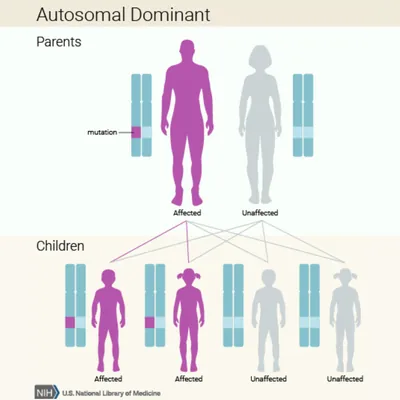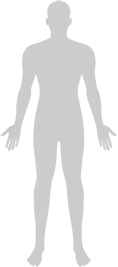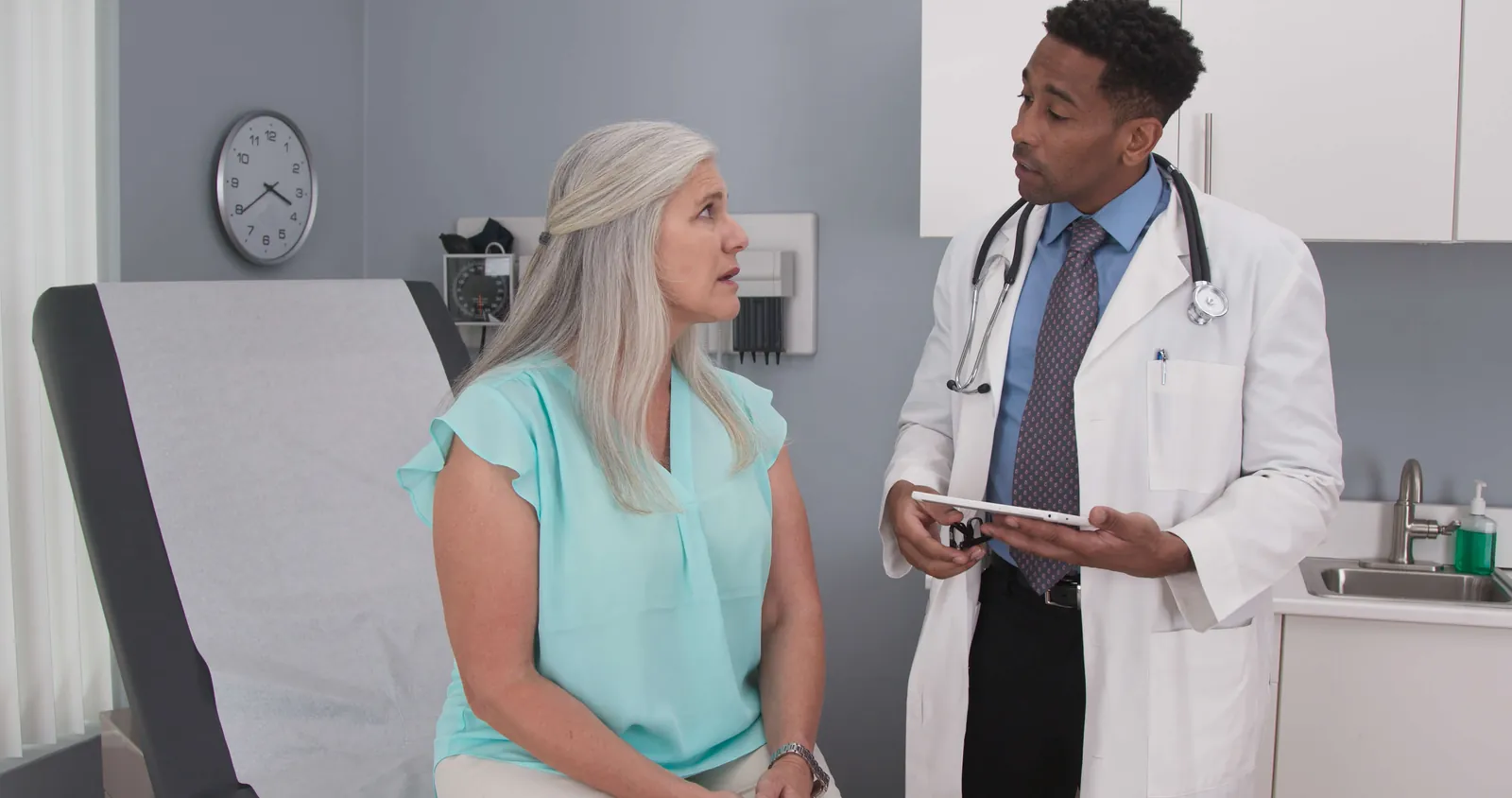Symptoms related to this disease may affect different systems of the body. Use the 'Filter and Sort' function to learn more about which body system(s) are affected by this disease and their associated symptom(s).
Autosomal Dominant

People affected by an autosomal dominant disease have a 50% chance of passing on the mutated gene to their biological child.
Learn more about inheritance patterns from the National Library of Medicine (NLM).


